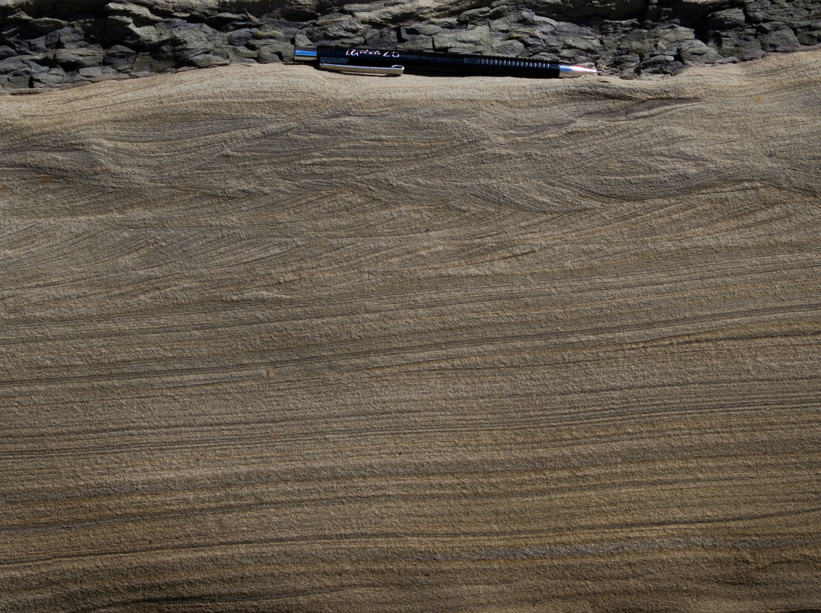Water flowing over the bottom of a sandy river or beach bed can lead to ripples in the surface. To explore how these bed forms are born and take shape, Perillo et al. used a time-lapse camera, a laboratory-made river and ocean, and an initially flat bed of sand.
The authors conducted experiments in a flume called the Large Oscillatory Water Sediment Tunnel (LOWST), a tunnel equipped with pistons and pumps to generate different kinds of water flow (river flows and ocean waves). They covered the bottom of the LOWST with sand and evened it out. Using a wooden rod, the authors made a small indent in the sand and let water flow over the system. The authors experimented with water that flowed in one direction, water that oscillated, and water that switched between an oscillating flow and a unidirectional flow (combined flows).
In all cases, the defect developed a crest and two “horns,” or small indents. Bed form development looks the same (i.e., has the same geometries) whether it occurs in the bed of a river or in a coastal environment,
The researchers also saw that sediment transport under combined flows with a long wave period is more susceptible to being dominated by the unidirectional flow component. This dominance suggests that the occurrence and significance of unidirectional flows may be underrepresented in the ancient sedimentary record from the bed forms and sedimentary structures produced.
The authors expect that their work will contribute to a universal model of how fluid movement can turn flat sand into a bed full of features and their ancient counterparts. (Journal of Geophysical Research: Earth Surface, doi:10.1002/2014JF003167, 2014)
—Shannon Palus, Freelance Writer
Citation: Palus, S. (2015), Exploring how water flow affects bed forms in different environments, Eos, 96, doi:10.1029/2015EO023209. Published on 4 February 2015.
Text © 2015. The authors. CC BY-NC 3.0
Except where otherwise noted, images are subject to copyright. Any reuse without express permission from the copyright owner is prohibited.

